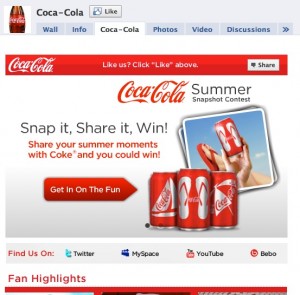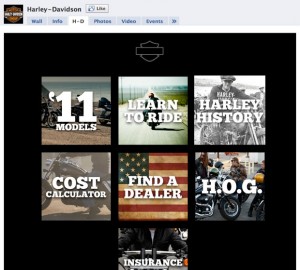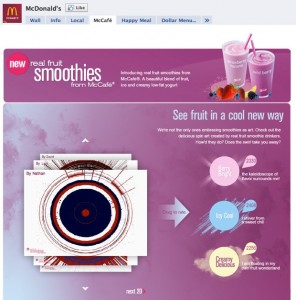 There is a mad rush going on, a rush as marketers are waking up to social media and wondering what to do – for a long time their agencies and consultants have laid out strategic plans to approaching the social web, many of them based on listening and research as a first step, followed by the creation of content and finally interaction with consumers. And yes, these strategic frameworks are in theory correct but very difficult to implement as brands tiptoe into the water.
There is a mad rush going on, a rush as marketers are waking up to social media and wondering what to do – for a long time their agencies and consultants have laid out strategic plans to approaching the social web, many of them based on listening and research as a first step, followed by the creation of content and finally interaction with consumers. And yes, these strategic frameworks are in theory correct but very difficult to implement as brands tiptoe into the water.
These frameworks are in essence correct, we must first analyse the landscape and understand where our consumers are present, then begin to understand what they are talking about before we launch into interaction. so if we need a framework, let the generic steps be:
- Listen and understand
- Develop presence in relevant spaces
- Drive content through these newly opened channels
- Create interaction between brand and consumer (& eventually empower consumer to consumer interaction with brand messages)
But let’s not get too bogged down in the framework.
 As we see in Jeremiah Owyang’s (@jowyang) article The Future of the Social Web, his first recommendation is ‘don’t hesitate‘. When we needed a website we didn’t stop to analyse the strategic landscape and determine whether our customers, or prospects, were really online – we trusted in the fact that someone else had done the work and that we should simply follow the crowd; the writing on the wall said that brands needed a site and so marketers briefed their agencies to build them – the strategy came within the execution and as part of the evolution (particularly in a channel that was, and is still, changing so fast).
As we see in Jeremiah Owyang’s (@jowyang) article The Future of the Social Web, his first recommendation is ‘don’t hesitate‘. When we needed a website we didn’t stop to analyse the strategic landscape and determine whether our customers, or prospects, were really online – we trusted in the fact that someone else had done the work and that we should simply follow the crowd; the writing on the wall said that brands needed a site and so marketers briefed their agencies to build them – the strategy came within the execution and as part of the evolution (particularly in a channel that was, and is still, changing so fast).
The era of websites, be they for corporates or for brands, was followed by the craze around campaign microsites, as marketing began to control the user journey and drive people to experience the brand more than the simple dimensions of a TV spot or a print ad, and capture their information to build a database. This was then most recently followed by blogs as companies began to express their opinions and drive real engagement and conversation with their prospects. And now, there is social media…
A Facebook page is the new website, microsite and corporate blog – an (almost) no-brainer.
The simple Facebook page (to understand the difference between profiles, groups and pages see this blog post), has taken the marketing world by storm. As Ben Kunz states in his article ‘Products that are features are going away‘, he says that the product innovation that was Facebook is now simply becoming a feature (and incorporating the features of the products that have come before it).
 The Facebook page delivers content much like a brand site, creating tabs that act like a site infrastructure, include audiovisual content be it images or video that drive engagement and interest around the brand.
The Facebook page delivers content much like a brand site, creating tabs that act like a site infrastructure, include audiovisual content be it images or video that drive engagement and interest around the brand.
The page acts like a microsite, replacing the landingpage for a campaign, being easily accessible by a simple vanity url (once you have the necessary 25 likes and register your unique name), it allows the marketer to simply and easily collect data (through a simple click of the like button, we have access to detailed profile information) and hence build a database of prospects and consumers more quickly and effectively than we ever could image building a flash microsite with a custom database behind it.
Through the wall, the brand can express itself, and start to give updates and links to information that is either within the Facebook page or beyond. As we move into conversation the brand can engage in a dialogue with individuals and answer questions and discuss, both in a one-to-one and one-to-many format (communicating both with consumers or prospects who engage, but also connecting with those that are simply browsing) – and the wall can even empower consumer-to-consumer interaction driving the brand message beyond the hands of a in-house PR team.
 Brands are now even taking the Facebook experience into e-commerce, beginnning with Pampers recently who allowed the purchase of product directly from the Facebook tab, and this FB-Commerce will surely take-off in the coming months as payment and fulfilment systems begin to crop up with easy integration with the platform.
Brands are now even taking the Facebook experience into e-commerce, beginnning with Pampers recently who allowed the purchase of product directly from the Facebook tab, and this FB-Commerce will surely take-off in the coming months as payment and fulfilment systems begin to crop up with easy integration with the platform.
Finally the Facebook page can also deliver on CRM, by what is quickly being referred to as social CRM, as we send messages to the database or communicate with those who identify themselves as existing consumers (note: it is currently difficult to segment between consumers and prospects on the Facebook page or within the database). The Facebook tools or ‘insights‘ also allow us to analyse the types of individual who are engaging and interacting and start to give us real-time visibilty on our database, compared to legacy field and analytics techniques that have taken weeks in the past to give the same results and insight.
 Many brands are already jumping on the bandwagon, and spending time and energy to develop deep and engaging Facebook experiences – check out these articles: Top 50 Branded Facebook Pages, June 2010: Clear Winners Emerge & 35 of the Best Facebook Fan Pages showing examples of the best Facebook pages, even if new examples are appearing everyday
Many brands are already jumping on the bandwagon, and spending time and energy to develop deep and engaging Facebook experiences – check out these articles: Top 50 Branded Facebook Pages, June 2010: Clear Winners Emerge & 35 of the Best Facebook Fan Pages showing examples of the best Facebook pages, even if new examples are appearing everyday
A few words of warning.
I am indeed proposing the fact that brands spend a little less time asking and discussing their online and social strategies and take the leap of faith to jump in – but this does not mean that this should be without any preparation. Yes, it is advisable to be present and create a Facebook page, mainly because if you don’t, someone else will and this could potentially drive the brand in a direction that is not aligned with your overall strategy – an interesting example of this is Coca Cola who officialised their largest unofficial fan page and brought the creators onboard to run it.
From a content point-of-view, the key piece is making sure that it is worthwhile and adds value for the consumer – a page without content will quickly be flagged, and maybe even rejected by customer groups. For this reason don’t make a song & dance about launching a social media presence – a campaign for Facebook makes about as much sense for a campaign to celebrate a TV commercial – focus on the content and let this, and the users, be your megaphone to drive sharing and awareness; beyond the launch remember that social media is alive and very much consumed in realtime, so a focus on keeping your content alive and your users interest will keep them coming back and sharing.
Finally a look at measurement.
If there is one watchword for measuring these activities, it is to not be fooled by metrics and to focus on quality vs quantity – increasing numbers of fans/likes/followers is not an objective in and of itself, but the quality and depth of their engagement can drive your business.
As Jeremiah Owang points out so clearly in his keynote speech for LeWeb this year (Social Business Forecast: 2011 The Year of Integration), base measurement metrics on who you are talking to and think of these activities as medium to long term, rather than a campaign to drive a peak of results.
If you are still unsure, still lurking in the strategy and not sure if you are ready to take the plunge, think about the fact that everyday the clutter grows larger, everyday consumers receive more messages and if you cannot focus on where they are surfing you risk missing them, and if you don’t create your presence, you run the risk of being usurped, by the community, or worse by your competitors.
And remember this quote from Peter Drucker:
Because the purpose of business is to create and keep a customer, the business enterprise has two–and only two–basic functions: marketing and innovation. Marketing and innovation produce results; all the rest are costs. Marketing is the distinguishing, unique function of business.
The web, and social media, allows us to do both of these, so don’t get stuck in analysis (leading to paralysis), take the leap…


1 comment